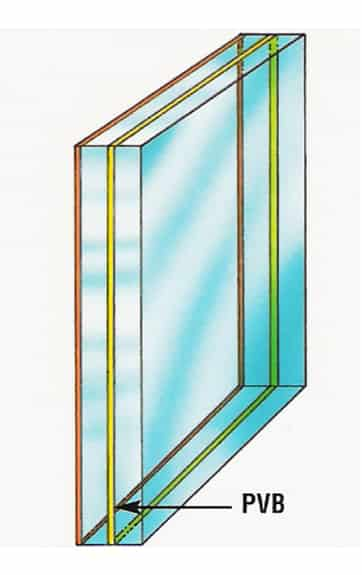Safety glass
Products
Materials
SAFETY AND SECURITY GLASS
Safety glasses are specially treated glasses that make the glass tougher and more break-resistant. The main types of safety glass are toughened and laminated glass. Security is ensured by the overall strength of the glass, as well as by the properties of the glass after breakage. Depending on the purpose, safety glass is used differently in glass packages.
TEMPERED GLASS
Tempered or toughened glass is produced by exposing glass to high temperatures and cooling it quickly thereafter. As the result of such treatment, the glass becomes approximately 5 times harder than ordinary glass. The load enduring ability of tempered glass is remarkably increased. Tempering also affects the breakage characteristics of glass. Should tempered glass still shatter under severe strain, it will result in small safe shivers, not in sharp pieces of glass.
LAMINATED SAFETY GLASS
Laminated glass comprises two or more layers of glass. Laminated glass acquires its protective qualities in the laminating process. Two or more layers of glass are bonded together with the PVB interlayer. The interlayer and the glass layers are sealed with great pressure and high temperatures.
The PVB interlayer makes the laminated safety glass into tough and hardly breakable glass. Exposure to excessive pressure will make it shatter like ordinary glass, but unlike ordinary glass the pieces do not scatter, but hold onto the PVB interlayer. Hence, insulated glass may crack, but does not fall into pieces, in this way reducing the risk of cuts. Owing to the PVB interlayer, broken insulated glass will stay on in the frame and decrease the risk of falling out of the window.
By laminating tempered glass the properties of both types of glass are combined and a very hard glass can be achieved in this way.
Advantages:
- Reduced risk of injury when glass breaks
- Protection against burglary and vandalism
- Laminated glass for UV protection and noise insulation
- Laminating tempered glass combines the properties of both types of glass to achieve very strong glasses.



